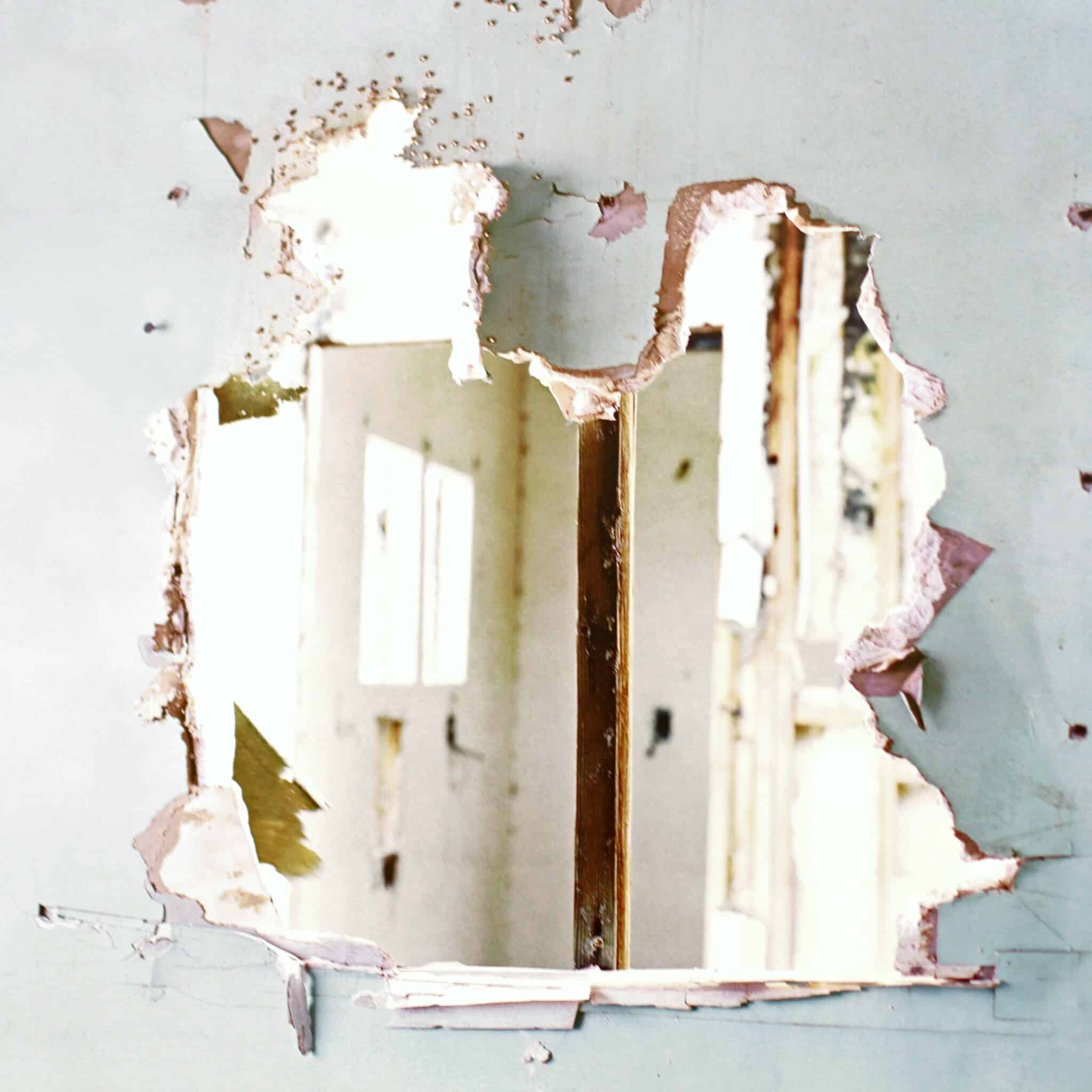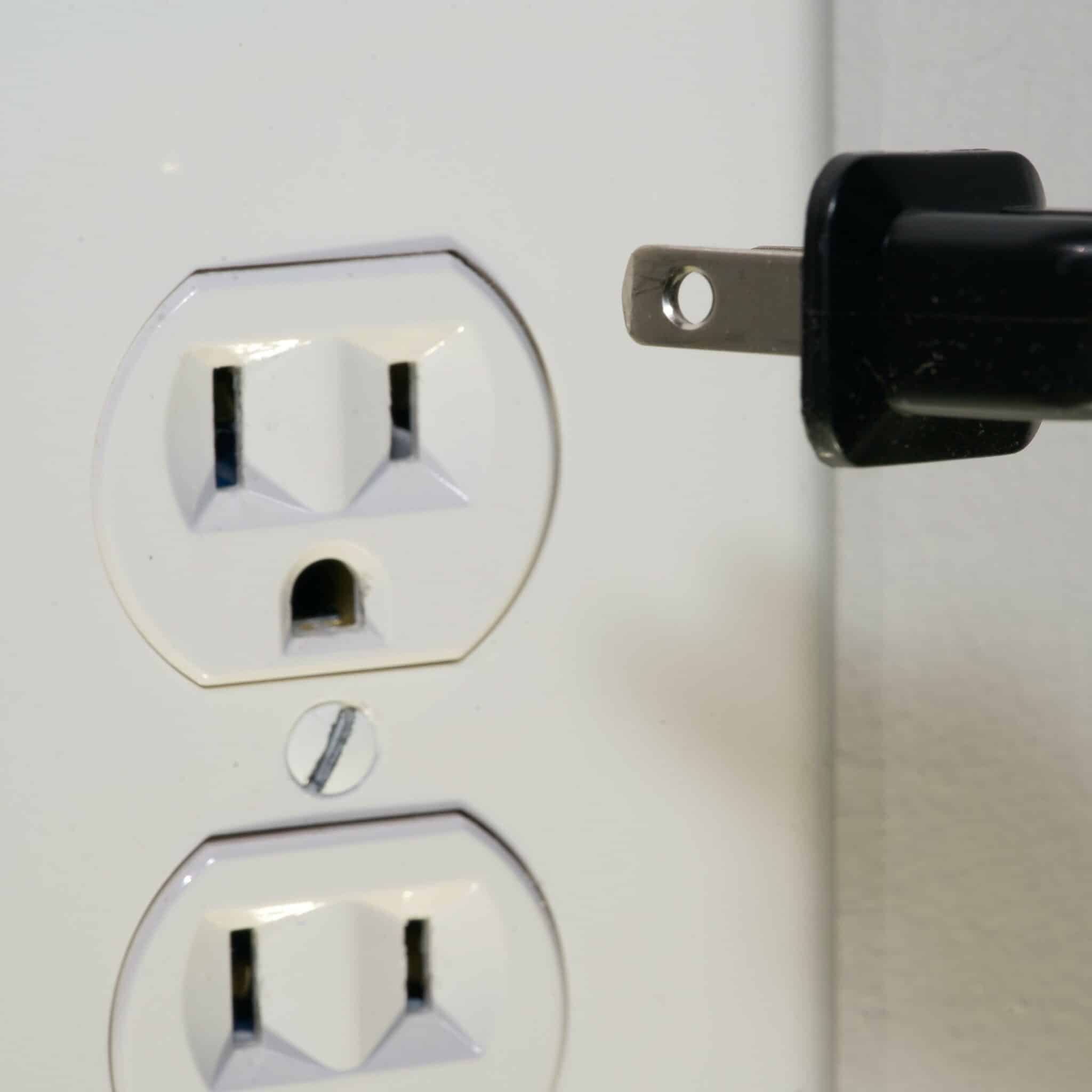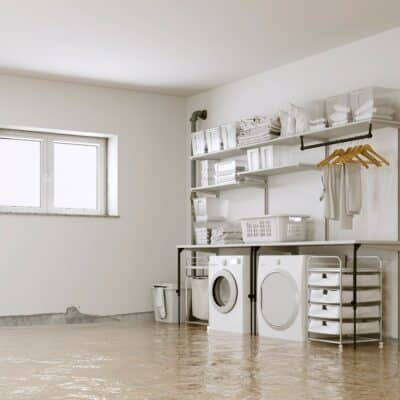Out of the Frying Pan: Home Inspection Defects Go From Bad to Worse
By Alyssa Cink
Last Updated November 9, 2023

Between the inspection and move-in day, it isn’t rare for home inspection defects to change. This can be frustrating for buyers and inspectors, alike.
For example, one home inspector visited a property located at the bottom of a steep hill. While there, he observed that the house’s position on the slope could lead to flooding and water intrusion. As such, he advised his client to ask the seller about any past water problems. Unfortunately, the buyer disregarded his warning.
Two months later, and after three days of heavy rain, water filled the crawlspace and flooded the driveway. The new owners had to slosh through water to get into their home. They called Lisa Archer of BPG Inspections Memphis in Tennessee, who worked with that inspector at the time, demanding an explanation. Archer pointed to the inspection report, where the inspector had documented evidence of previous ponding in the driveway and waterline stains on the crawlspace’s foundation walls.
The quality of the report’s writing and photos wasn’t the problem, Archer said. Rather, the buyer just hadn’t grasped how serious the potential water intrusion could be. He hadn’t consulted the seller about the sloping or water stains. Additionally, it wasn’t raining on the day of the inspection, so Archer’s team couldn’t have predicted the outcome. All they could do was report visible conditions at the time of the inspection, recommend follow-up as needed, and talk things over when their intuition proved true.
How Clients Discover More Serious Home Inspection Defects
Archer’s story illustrates how, even with the most thorough inspection, some home inspection clients don’t take potential defects seriously. Then, months or even years later, the home inspection defects you reported can turn out to be much, much worse than either you or the buyers imagined. Whether the clients regret their purchase entirely or want to push the repair costs onto someone else, you’re often the first person they call.
Naturally, you don’t have a crystal ball. You can’t predict exactly how bad material defects will become. And yet, these circumstances are among the most common instigators for claims in the home inspection industry. Note that we are not referring to the top kinds of claims home inspectors face; you can read about those here.
To help you prepare for situations like these, we talked to home inspectors and their teams about their experiences.
Remodeling
According to our interviews, remodeling commonly reveals bigger issues that weren’t as visible on the surface. While removing drywall, replacing floors, and updating components, homeowners peel back outer layers and find a more deeply rooted, material defect than what you saw during the inspection. And, because clients expect their home inspectors to see through walls, they blame you.
Common discoveries during remodels include water issues related to leaks, mold, and improper flashing, said Reese Perkins of Perkins Home Services, LLC in Maine. While thermal imaging and moisture meters help identify possible moisture intrusion, proving the full extent of rot, mold, or active leaks requires follow-up from the buyer. And if clients don’t follow up, they could see extensive property damages later.
“I once had a client upset about how we didn’t tell them about all the mold they found in the ceiling once they took it out,” Perkins said. “We did tell them about the water stain. But [we] did not see any surface mold. Our typical reply is to remind them that we cannot see inside walls and ceilings and that this is all explained in their agreement.”
Jean Soong of Clear Sight Inspections in New York recalls a similar experience with a client who discovered more severe issues while renovating a deck.
“They started doing some construction on this deck, and they found out that their deck was completely deteriorated from the inside. But you could not see that from the outside,” she said. “Sometimes…there are no cracks, no moisture penetration, [and] no other visible indications.”
Repairs
Clients may even discover more severe issues while repairing unrelated defects. While inspecting an attached garage one winter, Soong’s inspector saw wood rot without visible signs of wood destroying insects. The sellers had covered the garage’s ceiling with drywall, limiting the inspector’s view.
Three months later, he returned for a final walkthrough. By that point, the ceiling had started to leak, and the sellers had removed the drywall to collect the leaking water. With the drywall gone, the inspector looked between the panels and saw active termites, Soong said.
Soong’s partner referred to photos from three months earlier to show that, at the time of the inspection, the active termites were not visible. He could’ve only seen the surface-level wood rot, which he’d reported. Thanks to the coinciding leak and final walkthrough, Soong’s team made sure the sellers addressed the termite and water damages before closing. Now they recommend further investigation whenever they see signs of wood rot—just in case the worst is out of sight.
Ignored Recommendations
Likewise, your clients could delay or neglect your recommendations, causing the existing defect to deteriorate further.
Archer once identified a small spot of potential mold in the back of a kitchen sink cabinet. Even after running the dishwasher and filling the sink, the area remained leak-free. Archer suggested mold testing and remediation, but the buyers didn’t listen. They removed the kitchen sink cabinet and found the entire wall behind it caked with mold. It turned out, the leak had come from a bathroom on the other side of that shared wall. Had the buyers followed her advice, they might’ve stopped the leak sooner and minimized the mold growth.
Similarly, Soong’s team once inspected a home with a defective, flat roof. They advised the seller to have a qualified professional evaluate the roof, but the seller refused and sold the home as-is. After the clients moved in, a severe rainstorm tore through the area before they could repair the roof themselves. Now, instead of just a roof defect, they also had to deal with a leaking ceiling and the resulting water damages.
The challenge is, even if you distinguish between the highest priority home inspection defects, and even if you communicate urgency about the issues that need more immediate attention, your clients’ priorities might not align with yours, Soong said. If they’re more concerned about a cosmetic defect than a leaking pipe, then that cosmetic defect will get attention first. Still, when that neglected leak causes progressively worse issues later, that doesn’t stop buyers from blaming you.
“You can lead a horse to the water, but they will not necessarily drink it,” Soong said. “I tell people what the important things are to look out for, but they still…[do] what they deem is important.”
Older Appliances and Systems
 In Perkins’ experience, clients often face an unexpected expense or challenge when appliances function during the inspection but need repairs or replacements soon after.
In Perkins’ experience, clients often face an unexpected expense or challenge when appliances function during the inspection but need repairs or replacements soon after.
Perkins and his team warn clients about these pending expenses in their defect inspection reports. They typically state that the component is “likely near the end of its useful life.” Although they get fewer complaints about future replacements, some clients don’t take the warnings seriously or pay close attention.
For example, Perkins explains that Pushmatic electrical panels went out of production about 50 years ago. However, they’re still common in his inspection region. They might function properly during the inspection. But, due to their age and lack of available parts, few electricians service the Pushmatic panels. As a result, projects like hot tub installations require new owners to update the electrical panel, making the project thousands of dollars more expensive, he says.
Soong agreed that many homes in northeast America still use outdated electrical systems. Perhaps the previous owners lived there for 30 years without modernizing the electrical wiring. It might’ve been the same wiring from the 1950s or earlier, Soong said. With older homes, Soong’s inspection partner often finds mismatched, cross wiring, or knob and tube issues that clients shrug off. The mismatched, outdated wiring later overloads new technology, leading to expensive repairs and very upset homeowners.
Avoiding Claims from More Severe Home Inspection Defects
So what can you, as their home inspector, do to reduce the likelihood of getting claims and complaints from surprisingly more severe or pervasive defects?
1. Set clear expectations.
Conflicts like these often arise when clients have unrealistic expectations—either about what the home inspection will cover or how serious the reported issues really are. For this reason, all the inspectors we interviewed agreed that educating clients and setting clear expectations leads to fewer complaints. Because even if it sounds obvious to you, not everyone realizes that you can’t report conditions you can’t see, Archer says.
When written and organized correctly, your agreement acts as your first line of defense against clients’ unrealistic expectations. It should reference your standards of practice (SOP) and define a visual home inspection. Use it to explain that your inspections are non-invasive snapshots in time, and that they only cover readily accessible defects visible on the day of the inspection. Communicate these key points repeatedly, like during scheduling calls, in your pre-inspection agreement, during walkthroughs, and in your report.
“That way they don’t have any unreasonable expectations except in their own mind,” Archer said. “If you set expectations in your report [and agreement], even if your client comes back and says they want to sue you, when they take the whole report to their attorney, they realize they don’t have anything to stand on.”
On top of knowing what it includes, clients also need to know what a typical home inspection excludes. In pre-inspection agreements, exclusions limit or eliminate your responsibility to inspect for certain defects or examine certain systems and components.
For your exclusions, we suggest mentioning the items you:
- never inspect (particularly those that fall outside your SOP),
- usually inspect but may exclude due to extenuating circumstances, and
- inspect for a fee.
Ultimately, your pre-inspection agreement can only protect you if your client signs before you start your inspection. By signing in advance, your client makes your SOP and exclusions’ parameters enforceable.
2. Use reader-first language to describe major home inspection defects.
 As a home inspector, you frequently use industry-specific language that the average homeowner may not be familiar with. After all, not everyone has a background in construction or real estate. Consequently, highly specialized terms create barriers for readers outside that profession, which, in turn, discourages them from reading, the Bureau of Internet Accessibility (BOIA) writes.
As a home inspector, you frequently use industry-specific language that the average homeowner may not be familiar with. After all, not everyone has a background in construction or real estate. Consequently, highly specialized terms create barriers for readers outside that profession, which, in turn, discourages them from reading, the Bureau of Internet Accessibility (BOIA) writes.
To promote easy reading and write stronger, clearer instructions, use less jargon, the BOIA suggests. Opt for plain, simple language. If you can’t avoid an industry-specific term, then define it and explain why it’s significant in the context of your home inspection. For urgent, high-priority defects, help readers understand what might happen if they don’t address it soon.
For example, Perkins once inspected a home with insufficient deck flashing. He reported the problem. However, at the time, he didn’t realize that the client might not know that insufficient deck flashing can indicate rot. Five years later, the client found rot in his deck sill and blamed Perkins for not reporting it. Because of this experience, today Perkins not only points out a lack of flashing, but also explains what that means and why it’s important: potential rot.
This “word-crafting,” as Perkins calls it, uses more recognizable, reader-friendly language not to scare or alarm, but to better resonate with your audience.
“Joe Smith out there in the world may not know what flashing really is or what its purpose is,” Perkins said. “People understand rot much more quickly than they do flashing. And by calling it ‘potential,’ you’re not telling them it’s there. You’re letting them know that that’s a concern that you have. And if they want to take it further, they can take it further.”
3. Categorize home inspection defects.
If some defects require more immediate attention, use a summary or rating system to distinguish them. For example, while talking to clients, Soong’s inspection team identifies their top five, most urgent or expensive ticket items to address. Take this opportunity to explain what the problems mean and why they should be higher priorities.
Archer breaks her reports into three sections: immediate action items, less urgent considerations (like changing an air filter), and “for your information” items (like identifying a Wi-Fi thermostat). In Archer’s experience, this structure makes the report less overwhelming for the buyer. It also makes high-priority home inspection defects easier to identify, preventing them from getting lost in the wave of smaller issues that clients may worry about.
4. Be thoughtful about how you deliver information.
Home inspectors work hard to be an informative and helpful resource. You want to accurately report how severe a home inspection defect is, how bad it can become, and how urgent the repairs are. At the same time, you might worry about accidentally scaring the buyer off. Realtors may even accuse you of being an alarmist.
For this reason, Soong says to adopt a calm, logical tone—both verbally and in writing—to de-escalate high emotions.
“When they’re so emotionally charged at that time…They’re just spinning a little bit out of control. You have to get them back on the right track, and hopefully think of it through a more logical point of view,” Soong said. “I’ve actually had to decline a conversation at one point because they were getting really emotionally charged up and angry. I said, ‘Let’s take a step back. Let me review the report and I’ll get back to you.’ And later on, when they were calmer, I was able to talk to them in a more effective manner.”
“You remain calm. You explain [the defect] in a logical sense so that people understand it’s just something that needs to be repaired,” Archer agreed. “A lot of times I start my conversation with that. ‘This isn’t a deal breaker. But it does need to be repaired, and you might want to do it before you move in.’”
5. Take lots of photos.
In case you haven’t heard it enough, here’s the old adage again: A picture is worth 1,000 words. In an industry like home inspections, photos can do wonders. They can help inspection clients understand your findings and put them into context. They can bring reports filled with descriptions laced with technical jargon to life.
And, from a risk management perspective, photos can prove what was there on the day of the inspection—and what wasn’t. That’s why our claims team recommends taking pictures of everything and of every room in the home. This includes problem areas and areas without any defects.
“The pictures really tell the story,” Archer said. “My home inspectors all take 200 pictures for every inspection report, minimum, because you want a picture of everything. In case you ever have to open that report back up in court, you can say, ‘Here’s what it was at the time of my inspection. Yes, I see there is a settling crack now on your wall. But if you look in my picture, you can see that there was a giant armoire covering it all up.”
The more pictures you have, the more evidence we have to defend you against meritless claims. Read our past article to explore the role that photos play in limiting your liability.
Reduce your stress with the insurance team that knows you best.
Sadly, home inspectors are used to being scapegoated. Even if you take every reasonable step to set expectations for severe and worsening defects, clients can still ignore your warnings and blame you when conditions fall apart. That’s why it’s crucial to carry errors & omissions (E&O) insurance.
E&O insurance protects you against accusations of missing or failing to report something during your inspections. These claims happen more frequently than you may think. Over half of home inspectors face at least one claim during their careers. But with us, an E&O or general liability claim doesn’t have to mean the end of your business.
Today, InspectorPro Insurance is the leading home inspection insurance provider in the nation. With a reputation built on superior claims handling and quality customer service, we give clients peace of mind. Our risk management tools work to change the litigious culture plaguing home inspection businesses by helping inspectors educate their clients and avoid claims.
Our errors and omissions and general liability insurance policies are built to serve your unique business needs. Insuring with anyone else simply isn’t worth the risk.
Apply for a quote for our insurance program here.





